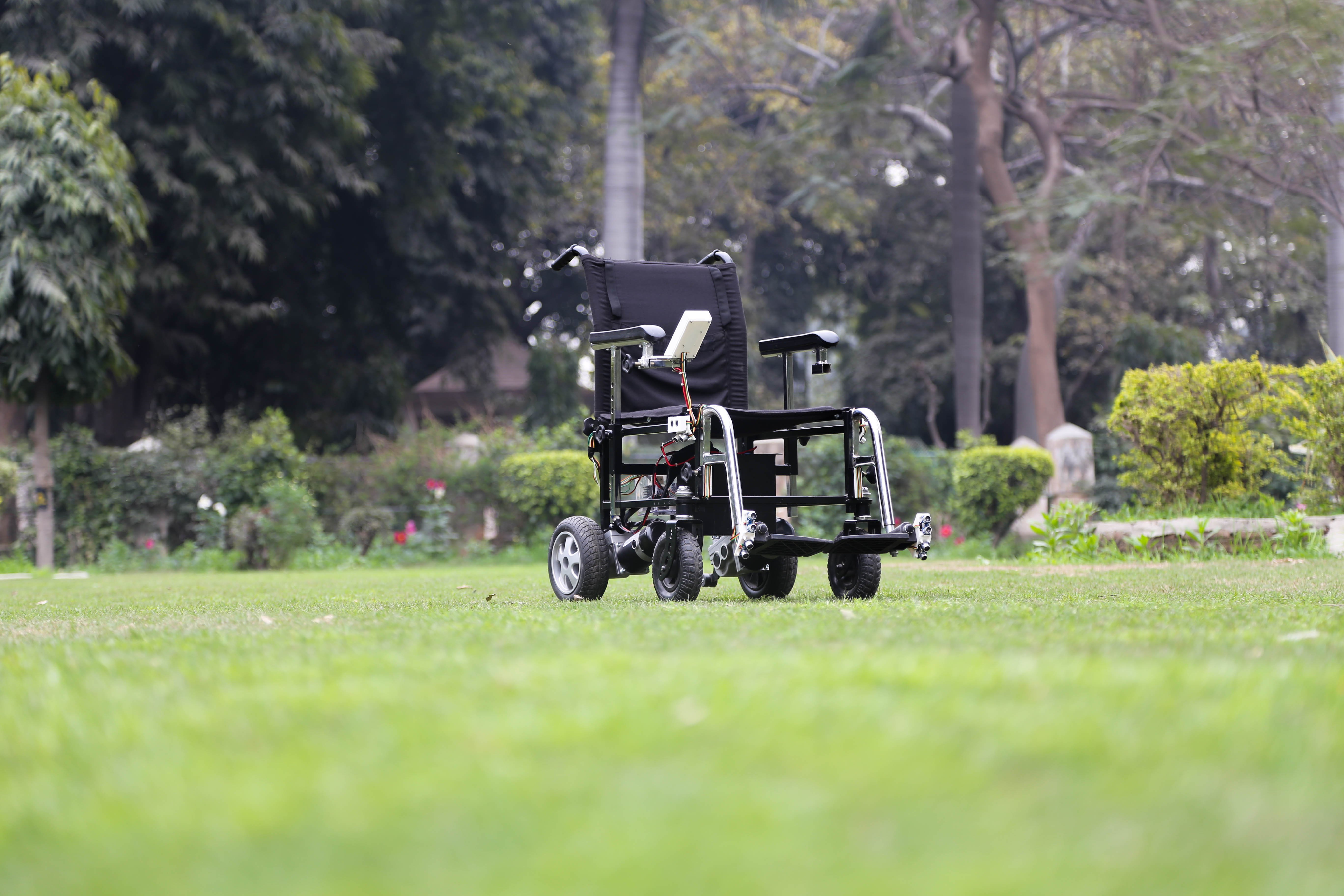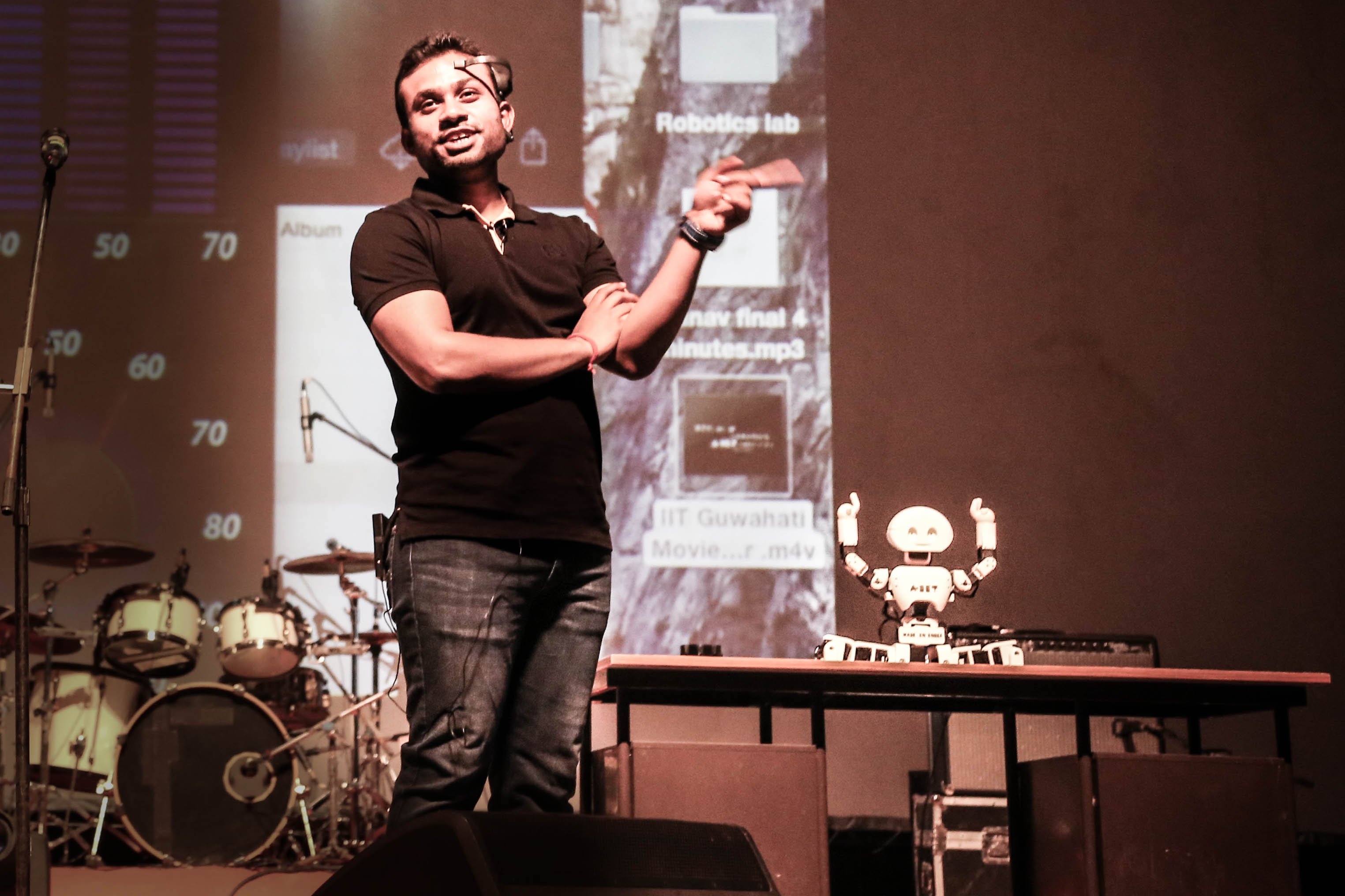Perhaps the best known user of a wheelchair, Stephen Hawking, has a wheelchair that the physicist can control either with a cheek joystick or hand. But an Indian innovator has come up with a wheelchair that he says can be controlled purely by signals from the brain.
“The wheelchair can only be controlled by your thoughts. It is the first of its kind in the world that will be available commercially,” Diwakar Vaish, the creator of this chair, told ScoopWhoop.
Vaish, who is the head of Robotics & Research at the A-SET Training & Research Institute in Delhi, says Steve Jobs is the biggest source of inspiration for him and particularly those suffering from Locked-in syndrome (LIS) to develop the wheel chair. LIS is an irreversible condition due to which a patient cannot move any muscles or communicate.
He said the wheelchair user only requires someone to switch it on, after which it makes the seated person in control of his movement. A user only has to focus on a panel on the right side of the wheelchair to control its movement. The panel allows the user to go forward, left or right and all the user has to do is focus on the direction in which the chair is required to go.
“All humans have different brains, the thought process is also different. So the biggest task for us was to provide a proper path for the brain signals to reach the sensors of the wheelchair. After extensive research we applied the concept of machine learning,” Vaish said.

According to Vaish, our brain has millions of neurons that transmit electrical impulses and due to electro-chemical reactions the electrical signals that are produced are passed on to the scalp. These impulses are then sensed by an EEG sensor which amplifies and filters the signal. These signals are then sent to a system that converts electrical signals into meaningful data, he says.
“The state of mind changes from time to time, depending upon the circumstances, so a balance needs to be struck.
“We have added various sensors like temperature sensors, sound sensors and a whole bunch of other sensors, to ensure that it functions smoothly,” Vaish said.
To stop the wheelchair the user just has to close one’s eyes tightly once. It also comes with sensors to ensure that it doesn’t go on to rough and uneven surfaces.

“The wheelchair is not meant to go off-road as it requires human body balancing. If the person without any body muscle control goes over the rough terrain then there is a good chance that he may fall off from the wheelchair,” Vaish explained.
He said that they have tested the wheelchair with some users and the results have been positive. He also said that the battery of the chair can be charged in just two hours using a Turbo charger and a normal charger takes around 8 hours. A full charge can last between two to four days depending on use.
The wheelchair can presently be bought for around Rs 2 lakh. But Vaish says he is trying his best to collaborate with the government so that patients can buy it at a lower price.

















